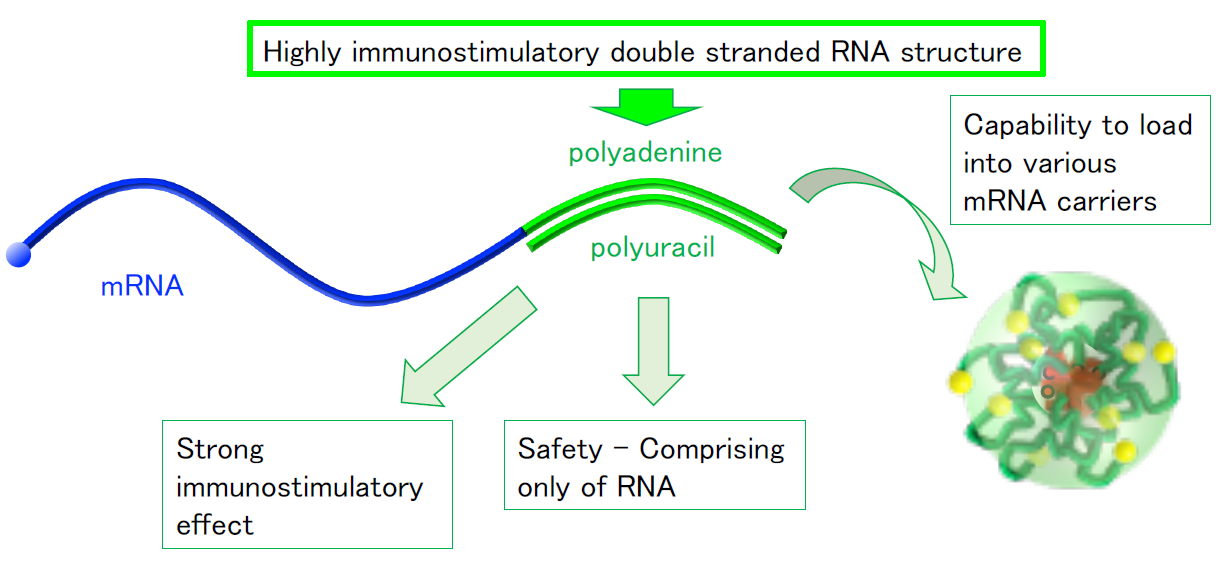New, dual-function vaccine design Messenger RNA alone trains immune system, boosts effectiveness


Among various double-stranded mRNA designs, polyuracil hybridization to the mRNA polyadenine sequence led to drastic enhancement of mRNA immunostimulatory properties without decreasing mRNA competency to translate antigen proteins. This system has various advantages as shown in this figure.
© 2018 Satoshi Uchida.
University of Tokyo researchers developed a novel approach to boost the effectiveness of a new type of vaccine. This approach is expected to be highly adaptable and boost the potential applications of new vaccines for personalized immunotherapy for cancer and prevention of emerging or re-emerging infectious diseases.
Until now, so-called pathogen-based vaccines have been made from dead or harmless portions of disease-causing virus or bacteria. The medical and scientific communities are attempting to create an alternative type of vaccine based on messenger RNA (mRNA), the single-stranded molecule made from double-stranded DNA, which cells "read" to build new proteins. mRNA vaccines have received attention as a method to prevent infectious diseases, to treat cancer, or to create new vaccines more rapidly and some of those mRNA vaccine systems have already advanced to Phase 3 clinical trials.
Pathogen-based and mRNA vaccines currently in development contain chemical additives, called immunostimulatory adjuvants, to increase their effectiveness. To date, adjuvants developed for pathogen-based vaccines have been used for mRNA vaccines, but researchers want to develop new adjuvants better suited for mRNA vaccines.
Project Assistant Professor Satoshi Uchida, first author of the research publication, and his team developed an mRNA vaccine that contains the function of an adjuvant without any additional chemicals. The design includes double-stranded RNA structures within the mRNA molecule, which do not adversely affect the mRNA's normal functions. In theory, this mRNA can be loaded into all carrier molecules, making it highly adaptable.
This design boosted the effectiveness of mRNA vaccines in mice and had a strong effect in stimulating the immune response of human immune cells growing in a dish. The combined results support the vaccine design's potential for future clinical application.
“I was surprised to find that such a simple design resulted in such an excellent effect,” said Uchida. He continued, “I will work hard to achieve clinical applications of this system in the future.”
Papers
Satoshi Uchida, Naoto Yoshinaga, Kayoko Yanagihara, Eiji Yuba, Kazunori Kataoka, Keiji Itaka, "Designing immunostimulatory double stranded messenger RNA with maintained translational activity through hybridization with poly A sequences for effective vaccination ," Biomaterials: October 11, 2017, doi:10.1016/j.biomaterials.2017.09.033.
Link (Publication )
)
Related links
- Graduate School of Engineering

- Department of Bioengineering, Graduate School of Engineering

- Laboratory of Takai and Cabral, Department of Bioengineering, Graduate School of Engineering






